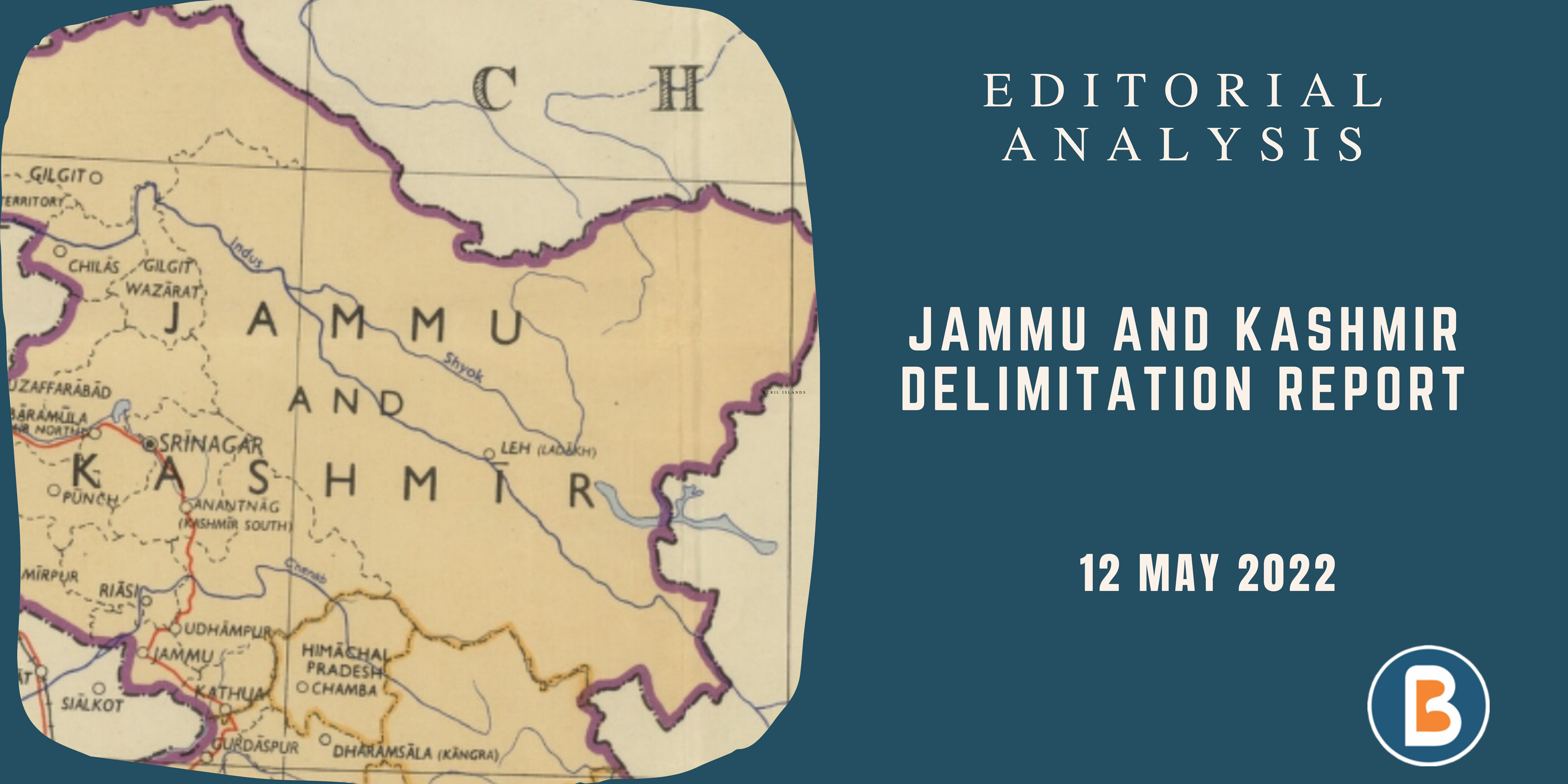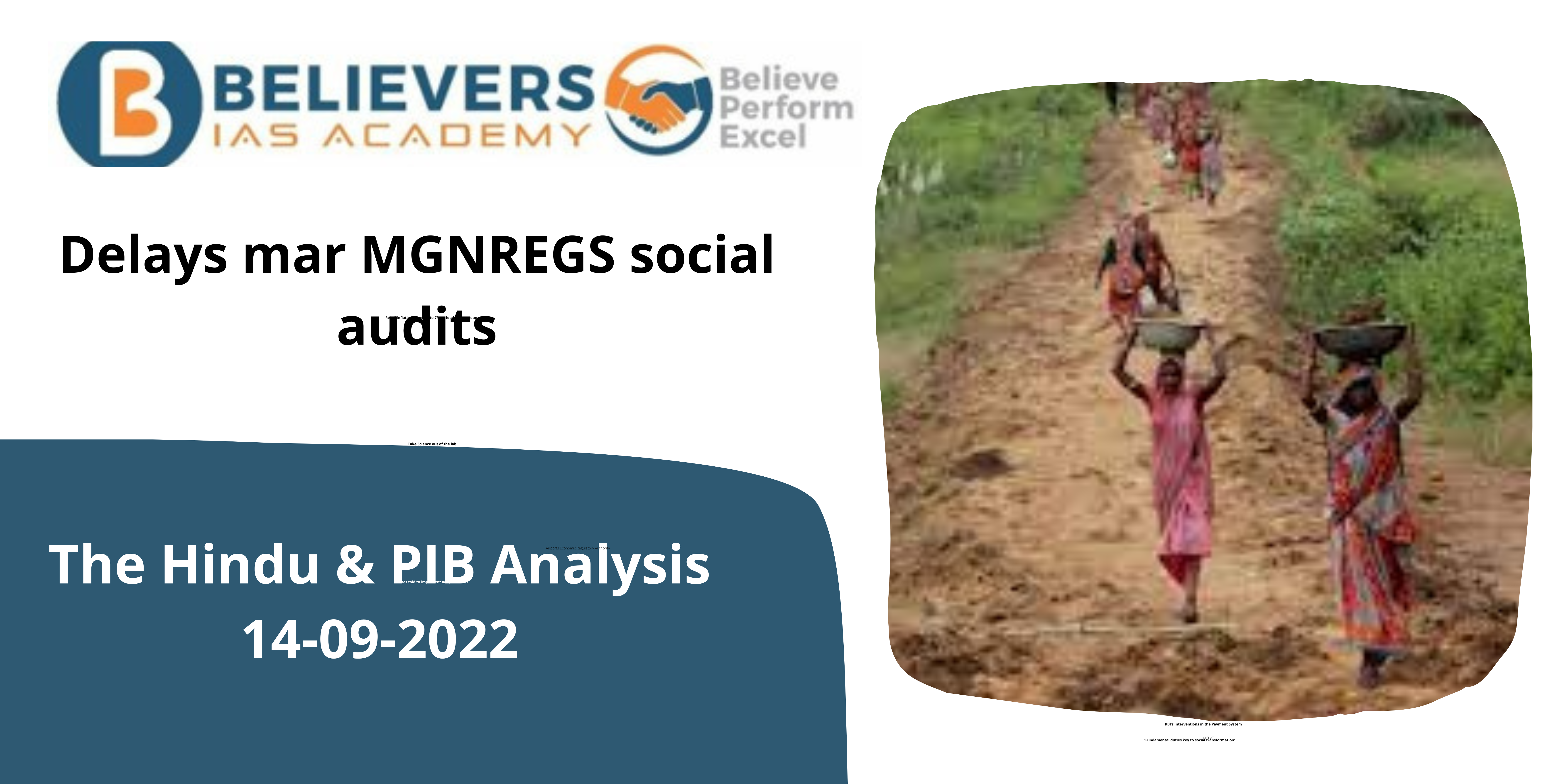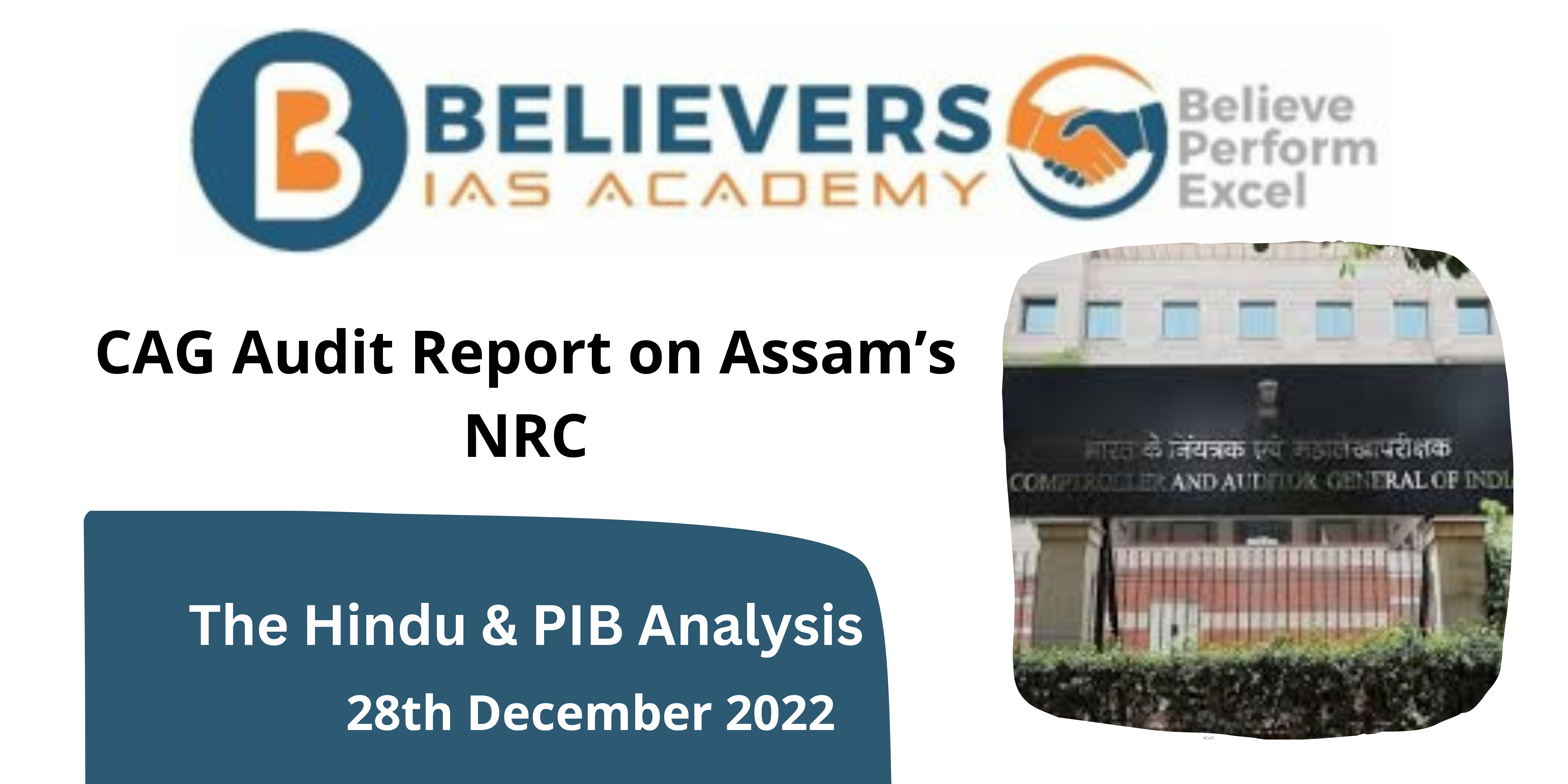Jammu and Kashmir Delimitation Report
Context:
- The J&K Delimitation Commission submitted its final report on May 5, 2022, two years after it was appointed to redraw the electoral boundaries in Jammu and Kashmir as per the mandate set by the Jammu & Kashmir Reorganization Act, 2019.
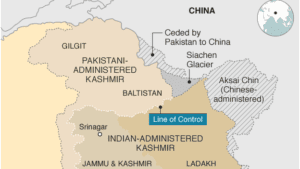
About the Delimitation:
- According to the Election Commission of India, delimitation is the process of redrawing the boundaries of Lok Sabha or Assembly seats.
- The process is conducted out in response to changes in a State’s or Union Territory’s demographic status.
- A Delimitation Commission, sometimes known as a Boundary Commission, is in charge of delimitation.
- The independent body’s decisions cannot be challenged in court. Delimitation Commissions have been established in the past, in 1952, 1963, 1973, and 2002.
- The Jammu and Kashmir Constitution and the Jammu and Kashmir Representation of the People Act, 1957 were used to delimit Assembly seats prior to the repeal of Article 370, which granted J&K special status.
- Meanwhile, the Constitution governs the delimitation of Lok Sabha constituencies.

Delimitation in J&K:
- The last time Jammu and Kashmir had a delimitation exercise based on the 1981 Census was in 1995.
- Jammu and Kashmir was then under President’s administration. Due to the difficult circumstances in the valley, there was no census in J&K in 1991. The Jammu and Kashmir Assembly enacted a legislation in 2001 postponing the delimitation process until 2026.
- In March 2020, six months after the state of Jammu and Kashmir was divided and reorganised as the Union Territories of Jammu and Kashmir and Ladakh, the Centre established a Delimitation Commission.
- The Commission was entrusted with delimiting Assembly and Lok Sabha constituencies in the UT of J&K based on the 2011 Census and in compliance with the Jammu and Kashmir Reorganisation Act, 2019 and the Delimitation Act, 2002. It was led by retired Supreme Court judge Ranjana Prakash Desai.
What can we infer from the report?
- J&K is divided into two divisions, with 37 Assembly seats in Jammu and 46 in Kashmir. Following the Commission’s final draught, six more Assembly seats for Jammu (now 43) and one for Kashmir are set aside (revised to 47). In the UT, the overall number of Assembly seats will rise from 83 to 90.
- The Commission has suggested that at least two Kashmiri Pandits be elected to the Legislative Assembly by the Centre.
- The panel has proposed that the Scheduled Tribes be given nine seats (STs). Six in Jammu (Budhal, Gulabgarh, Surankote, Rajouri, Mendhar, and Thanamandi) and three in the valley will be involved (Gurez, Kangan, Kokernag). In the Jammu area, seven seats have been set aside for Scheduled Castes (SCs).
- The Commission has suggested that the government consider nominating displaced people from Pakistan-occupied Kashmir to the Assembly.
- The Commission stated in its final ruling that it views the “Jammu & Kashmir region as a single Union Territory,” and that Rajouri and Poonch (from the Jammu division) have been amalgamated with the Anantnag constituency in the Kashmir region. Kishtwar-Rajouri is the new name of the new constituency.
- The Commission stated that it renamed 13 constituencies in the region after considering popular opinion. Gulmarg (formerly Tangmarg), Hazratbal, Zadibal, Lal Chowk, and Eidgah have all been restored in Kashmir, according to the decree. The Gulabgarh constituency’s name has been reinstated in the Jammu area.
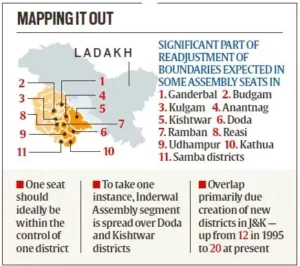
Source: THE HINDU.
For more update, click here to join our telegram channel

